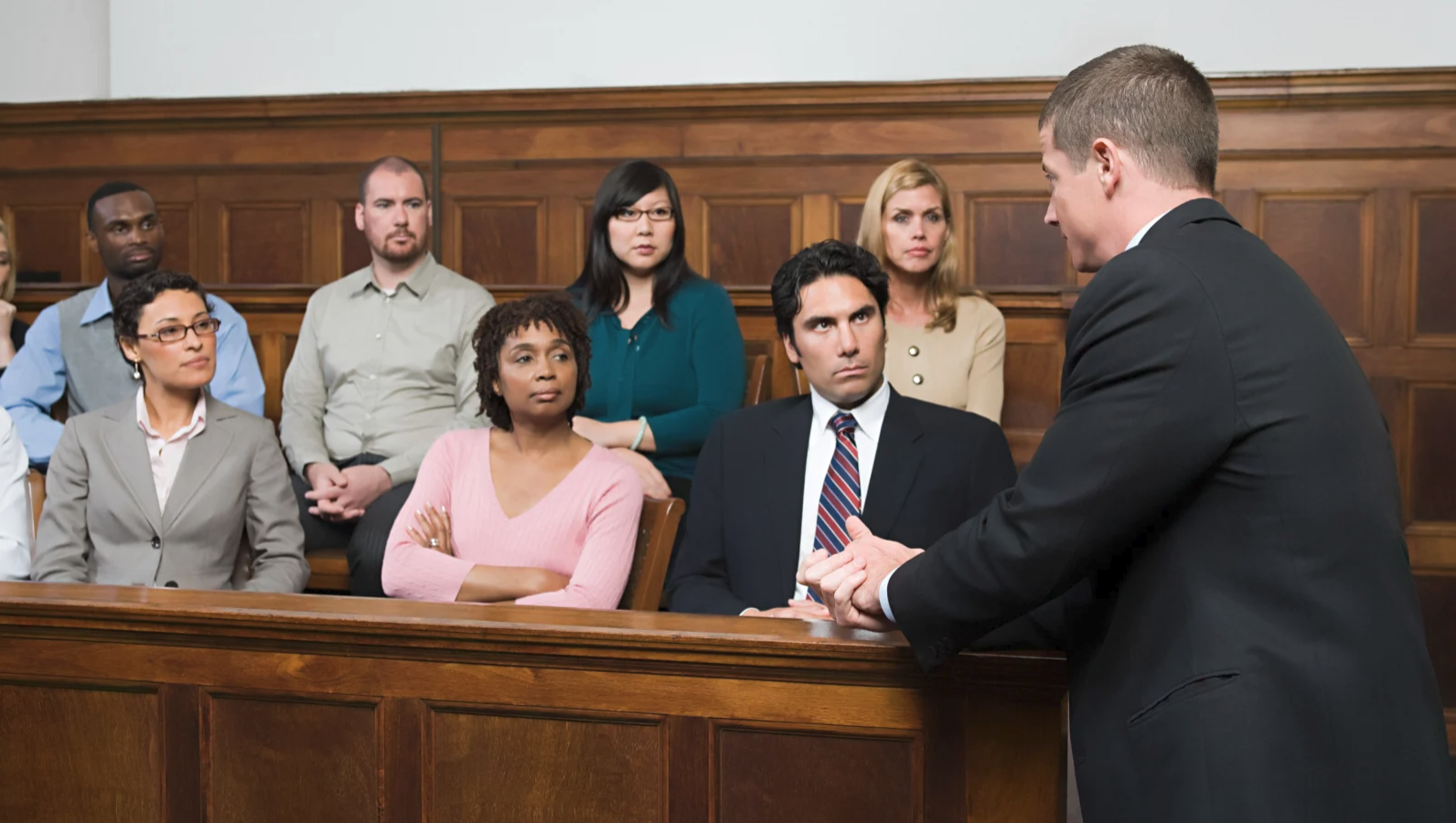Ding. Beep. Buzz. Flash. Waggle. Pulse. Flicker. Hum…. SILENCE! By the rule of law, you now have their attention. Well, maybe not their attention, but they are at least required to turn off their devices and sit in one spot. With their eyes open. While you talk. I hope you know what you are going to say but what are you going to DO to get, and keep, their attention? That is ultimately up to you. Your style. Your mastery of the facts. Your ability to present compelling information in an engaging way. While you ponder that question, let’s look at some ways you are certain to bore your jury with a keen eye on how to avoid the trap of dullness:
1. Use complex terms but don’t explain them
Terms of art all too often fall on a juror’s ear without explanation. Litigators frequently overlook the need to explain confusing terminology leaving the jury with that familiar, cock-eyed look of perplexity. The loss of understanding is obvious to someone who is keeping score from the sidelines. Blank stares. Glossy eyes. Gestures that hint at confusion. These uncomfortable tells result from unexplained jargon stuffed into otherwise excellent sentences. Consequently, its a bad idea to be a sesquipedalian orator in the courtroom.
See what I mean?
A study that explored the effects of jargon on learning found that presenting concepts first, free from jargon, then introducing the jargon later, increased understanding. (https://www.facultyfocus.com/articles/course-design-ideas/much-jargon-barrier-learning/)
To take advantage of this tip, consider the use of an analogy to first introduce a complex concept then follow it up with the formal explanation and the terms of art that are used in the industry.
2. Ask the same question 100 different ways
There comes a time when the point has been made. All too often, that moment ticks by before the topic has been laid to rest. When this happens, its easy to feel a sense of frustration emanating from the jury box.
In a 2013 article about juror frustrations, Judge Randy Wilson pointed out how the most often cited complaint by jurors is needless repetition.
https://www.justex.net/JustexDocuments/12/Advocate_Fall2013_OnlineV64.pdf
Within the same article, the accompanying image of an actual juror note drives this point home:
Make your point. Make it again if you really feel like you need to. But know when you are going too far and might be creating a sense of animosity with your fact-finders.
3. Explain the inner-workings of your complex, one-of-a-kind doodad, deal, contract interpretation, patent, injury, etc., without a simple, effective graphic
I get it. Your expert needs to be… an expert. You probably think this means the expert should wow the jury with their mastery of technical terms and a deep understanding of obscure processes and procedures. You’re right, they should do all those things. Expectation and reality are not the same however. The problem is, more often than not, these attempts to teach and impress result in confused looks and a clear lack of understanding.
The most effective experts and trial teams recognize that there are parts of their vast knowledge that are difficult to explain and enlist the help of charts, graphics or even a simple white board drawing to assist with their testimony. Sometimes being a bit wild can contribute to memorability too.
Researchers from the University of Saskatchewan looked at the effect that crazy, embellished graphics have on memory and retention (http://hci.usask.ca/uploads/173-pap0297-bateman.pdf) and they found that embellished graphics have a significant positive effect on retention and recall. The courtroom is clearly not the place for crazy graphics, but a little spice might mean a lot of memorability.



